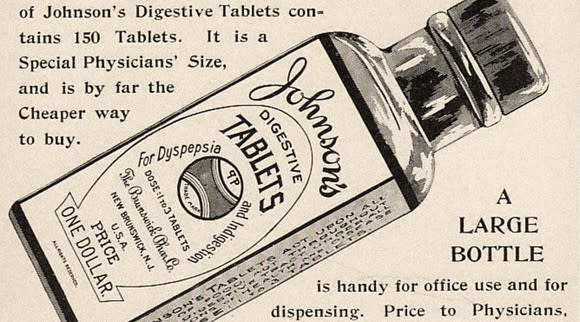Will Johnson & Johnson Do a Stock Split in 2018?
Healthcare has been an exciting industry lately, and Johnson & Johnson (NYSE: JNJ) casts a wide net over the sector. The company not only sells well-known consumer brands like Tylenol and Johnson's Baby Shampoo but also has extensive operations in pharmaceutical development and medical device manufacturing. Long-time shareholders have seen strong returns, and a big portion of their gains has been due to the dividend payments they've received. Yet despite a rising share price, Johnson & Johnson hasn't done a stock split in 16 years. Let's take a closer look at Johnson & Johnson and whether now could be the time to change that pattern.
When did Johnson & Johnson do stock splits before now?
Johnson & Johnson definitely hasn't avoided splits throughout its history. On many occasions over the years, the healthcare conglomerate has made moves to split its shares.
Date of Split | Split Ratio | 100 Shares in 1946 Would Now Be... |
|---|---|---|
April 8, 1947 | 2-for-1 | 200 shares |
Dec. 19, 1958 | 5-for-2 | 500 shares |
May 22, 1968 | 3-for-1 | 1,500 shares |
April 17, 1970 | 3-for-1 | 4,500 shares |
April 21, 1981 | 3-for-1 | 13,500 shares |
April 26, 1989 | 2-for-1 | 27,000 shares |
May 19, 1992 | 2-for-1 | 54,000 shares |
May 21, 1996 | 2-for-1 | 108,000 shares |
May 22, 2001 | 2-for-1 | 216,000 shares |
Data source: Johnson & Johnson investor relations. Excludes small stock dividends in the late 1940s and early 1950s.
When you look back at the way that Johnson & Johnson seemed to make its decisions to split its shares, the process closely resembles what you'd see from a number of other companies. Broadly speaking, when the share price climbed into triple digits, J&J started looking more closely at splits.
Yet the exact details differ. For instance, Johnson & Johnson waited until the stock had climbed very close to $200 per share before doing its 3-for-1 split back in 1970. Since then, however, the most common trigger for Johnson & Johnson to consider a stock split seems to have been when the stock climbed just a bit above the $100 mark. In particular, throughout the late 1980s and 1990s, J&J stock rarely had to climb more than $10 or $15 per share into triple digits before the company would choose to do a stock split.
How Johnson & Johnson put a stop to its splits
Since 2001, however, Johnson & Johnson hasn't done a stock split. For much of the period, that was because the stock price didn't actually climb enough to warrant such a move. Shares stayed well below the $100 level throughout the 2000s, and although the stock didn't take a huge hit during either the bear market in 2002 or in the financial crisis of 2008 and early 2009, dividends represented most of J&J's total return.
That changed during the 2010s. Rising into triple digits in 2014, J&J stock has now been above that level since late 2015. Shares recently hit new highs near $140 per share, which in the past would have almost certainly prompted strong consideration for a split.

Image source: Johnson & Johnson.
Shareholders have largely given up on the possibility of a split ever since company management addressed the issue in 2014. At the time, the company's CFO simply said that J&J didn't have any particular plans to split the stock at any point. That seemed to take the wind out of the sails of those who had thought that Johnson & Johnson might return to its past practices.
Will Johnson & Johnson split its shares in 2018?
Adding to the argument against a stock split is the fact that despite its relatively high share price, Johnson & Johnson doesn't particularly stand out among similarly sized companies. Among the 30 stocks in the Dow, J&J just barely makes the top 10 in terms of weighting and stock price, and its roughly 4% weight in calculating the average is only a bit above the 3.3% that would fairly represent the stock in an equal-weighted index.
Investors shouldn't count on seeing Johnson & Johnson do a stock split in 2018. Yet if the healthcare giant can keep doing as well as has done both in 2017 and over the long run, then shareholders shouldn't be too disappointed with J&J's reluctance to split its shares.
More From The Motley Fool
6 Years Later, 6 Charts That Show How Far Apple, Inc. Has Come Since Steve Jobs' Passing
Why You're Smart to Buy Shopify Inc. (US) -- Despite Citron's Report
Dan Caplinger has no position in any of the stocks mentioned. The Motley Fool owns shares of and recommends Johnson & Johnson. The Motley Fool has a disclosure policy.

 Yahoo Finance
Yahoo Finance 